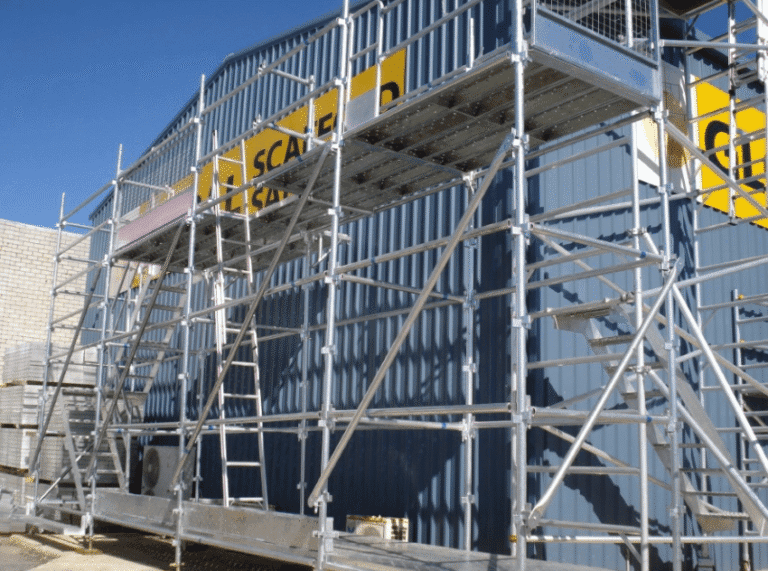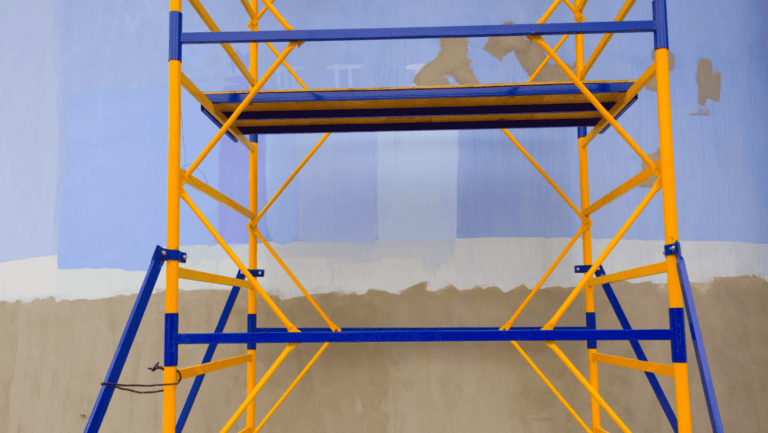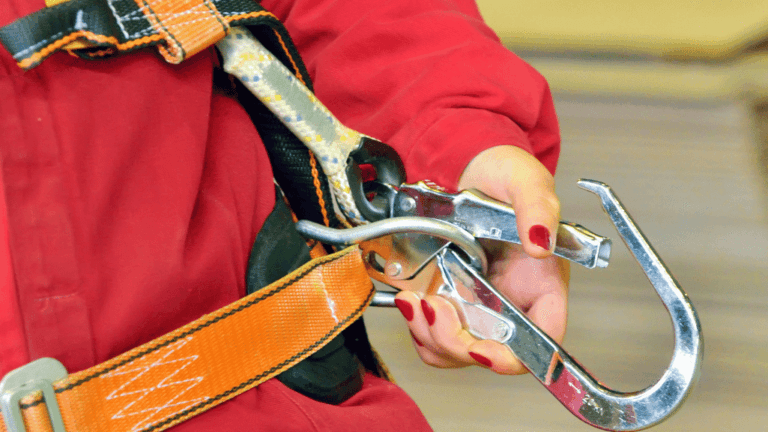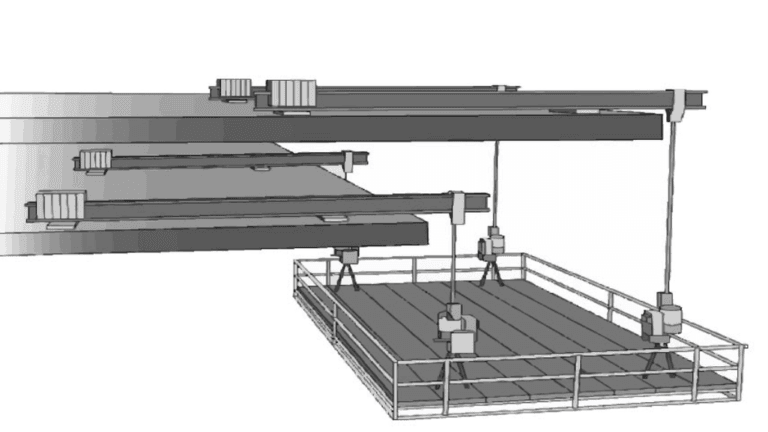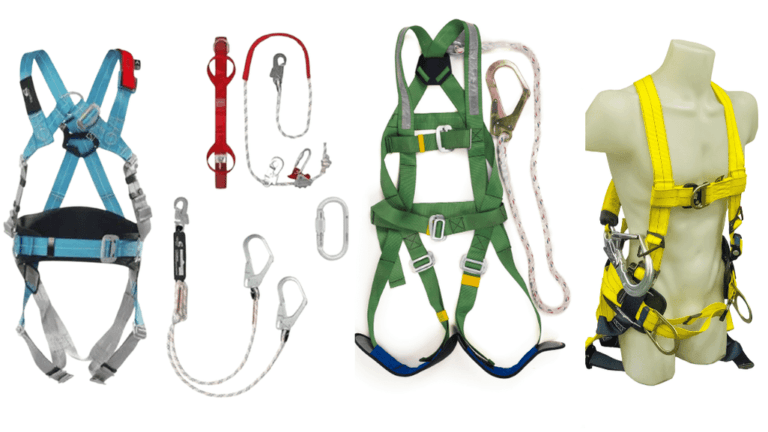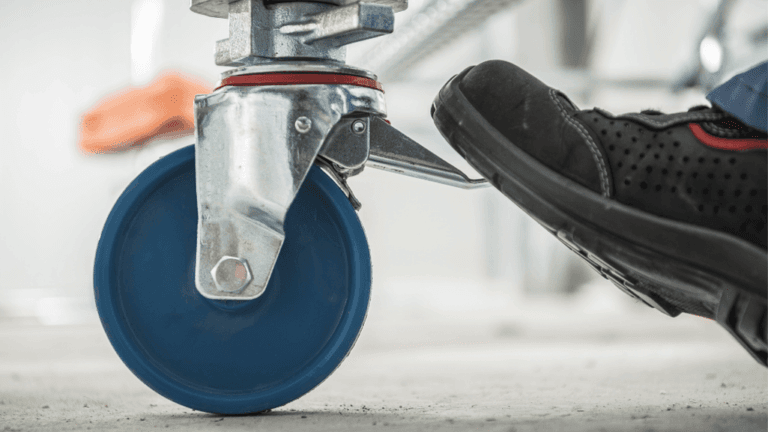Phone:
(+65)8319-0742
Frame scaffolding is a crucial component in the construction industry, providing a secure platform for workers at elevated heights. Whether you are working on a large-scale construction project or a smaller renovation, understanding the different types of frame scaffolding systems, their components, and rental options is essential for a successful and safe construction process.
Key Takeaways:
- Frame scaffolding is vital for safe elevated work in construction projects.
- There are various types of frame scaffolding systems available, each catering to specific project requirements.
- Understanding the components of frame scaffolding is crucial for constructing a stable and safe platform.
- Renting frame scaffolding from professional companies ensures proper installation, safety training, and ongoing maintenance.
- Regular inspections and adherence to safety protocols are essential for worker safety and project success.
Types of Frame Scaffolding
When it comes to construction projects, there are various types of frame scaffolding systems that cater to different needs, providing a secure and efficient working platform for workers at elevated heights. The following are the three main types of frame scaffolding commonly used:
1. Frame and Brace Scaffolding
The frame and brace scaffolding system is one of the most versatile and widely used types of scaffolding in the construction industry. It consists of modular frames that can be stacked vertically to create a stable structure. The frames are connected with braces to enhance the stability and strength of the scaffolding. This type of scaffolding is easy to assemble and disassemble, making it ideal for both small and large-scale projects.
2. Suspended Scaffolding
Suspended scaffolding is primarily used for projects that require vertical access to exterior building surfaces, such as window cleaning, maintenance work, and painting. It is suspended from the roof or other elevated points, providing a safe and adjustable platform for workers. Suspended scaffolding is commonly seen in high-rise buildings, allowing window washers and maintenance workers to carry out their tasks effectively.
3. Ring and Cup System Scaffolding
The ring and cup system scaffolding is designed for more complex construction projects, particularly in the industrial, marine, and offshore sectors. It offers modular parts that can be easily configured to accommodate various shapes and sizes. This type of scaffolding includes vertical standards, ledgers, bearers, and other components, allowing for customization and the construction of intricate scaffolding structures.
Each type of frame scaffolding has its own advantages and applications, catering to the specific requirements and safety considerations of construction projects. By choosing the right type of scaffolding, construction professionals can ensure a safe and efficient working environment.
Frame and Brace Scaffolding
Frame and brace scaffolding is an essential component in the construction industry. It offers a versatile, easy-to-use, and economical solution for workers at elevated heights. This type of scaffolding consists of modular frames that can be stacked multiple stories high, catering to both large-scale construction projects and smaller renovations.
One of the significant advantages of frame and brace scaffolding is its flexibility. It allows for the integration of various safety features, such as guard rail systems, entry gates, and optional stair units, ensuring the safety and accessibility of workers on the scaffolding.
Let’s take a closer look at the key features of frame and brace scaffolding:
- Modular Frames: Frame and brace scaffolding utilizes modular frames, which can be easily assembled and disassembled, enabling efficient construction processes. These frames are typically made of durable materials like steel or aluminum, ensuring the stability and strength of the scaffolding structure.
- Guard Rail Systems: To enhance worker safety, guard rail systems can be integrated into the frame and brace scaffolding. These systems consist of sturdy railings that surround the working platform, preventing accidental falls. Guard rail systems are an essential safety feature, particularly when working at significant heights.
- Entry Gates: Frame and brace scaffolding can incorporate entry gates to provide convenient access to the working platform. These gates ensure that workers can enter and exit the scaffolding safely, eliminating the need to climb over railings or other barriers. Entry gates improve worker efficiency and contribute to the overall safety of the construction site.
- Stair Units: To facilitate vertical movement on the scaffolding, stair units can be installed. These units consist of secure steps and handrails, allowing workers to navigate between different levels of the scaffolding structure with ease. Stair units enhance accessibility and minimize the risk of accidents while moving vertically.
With its modular frames, guard rail systems, entry gates, and stair units, frame and brace scaffolding provides a reliable and safe working platform for construction projects of all sizes. Its versatility and affordability make it a popular choice among contractors and construction teams.
Let’s visualize the core components of frame and brace scaffolding:
| Component | Function |
|---|---|
| Modular Frames | Building blocks of the scaffolding system that can be stacked and interconnected |
| Guard Rail Systems | Preventing falls and providing a safety barrier around the working platform |
| Entry Gates | Offering safe access points for workers to enter and exit the scaffolding |
| Stair Units | Enabling secure vertical movement between different levels of the scaffolding |
Suspended Scaffolding
Suspended scaffolding is a versatile solution for vertical access to exterior building surfaces. This type of scaffolding is commonly used by window washers, maintenance workers, and painters to perform their tasks efficiently and safely. The key advantage of suspended scaffolding is its adjustability, allowing workers to raise or lower the platform as needed, providing easy access to various heights.
Typically, suspended scaffolding is hung from a structure’s roof using ropes or cables, making it ideal for high-rise buildings and skyscrapers. It offers an efficient and practical solution for professionals who need to work at elevated heights for an extended period. This type of scaffolding provides a stable and secure platform for window cleaning, maintenance tasks, and painting projects.
With suspended scaffolding, window washers can effectively clean windows on tall buildings, ensuring a clear and unobstructed view for occupants. Maintenance workers can access and inspect building facades, ensuring the structural integrity and detecting any potential issues. Additionally, painters can utilize suspended scaffolding to reach every corner of a building’s exterior, ensuring a high-quality and thorough paint job.
Ring and Cup System Scaffolding
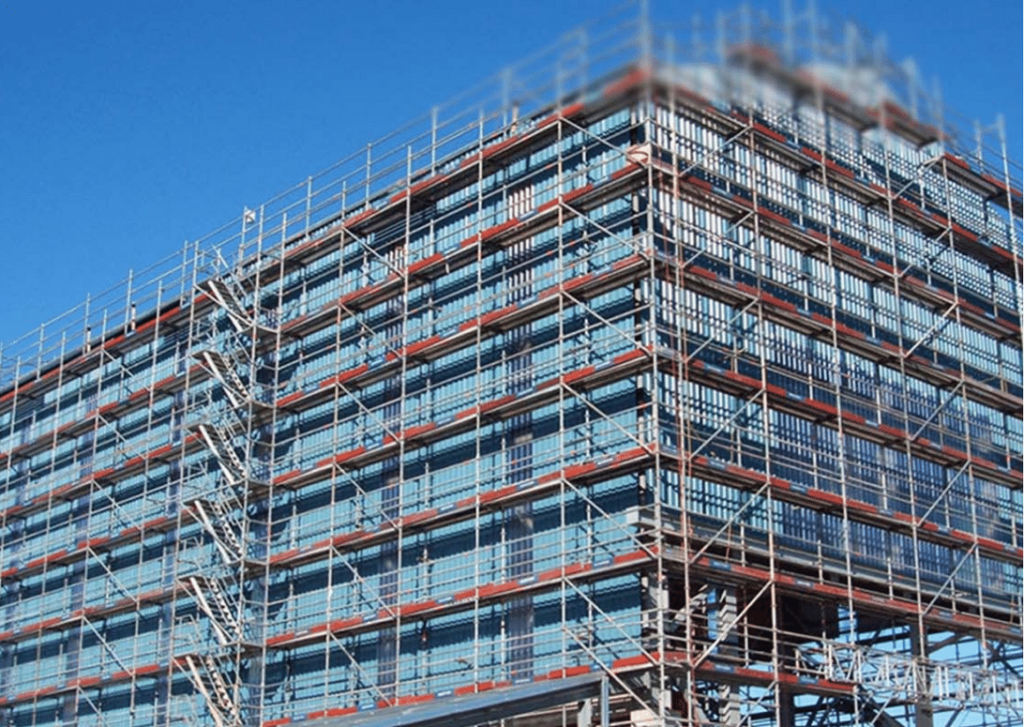
Ring and cup system scaffolding is a highly versatile solution specifically designed for complex construction projects in industrial, marine, and offshore environments. This type of scaffolding offers modular parts, allowing for easy customization and adaptation to unique construction requirements.
The ring and cup system scaffolding consists of several key components:
- Vertical Standards: These vertical posts serve as the main support structure of the scaffolding system. They are available in various lengths to accommodate different project heights.
- Ledgers: Horizontal ledgers connect the vertical standards, providing stability and support for the scaffolding structure. They are available in different lengths to suit various configurations.
- Bearers: Bearers, also known as transoms, are horizontal components that provide additional support and stability. They connect the ledgers to the vertical standards, ensuring a secure and sturdy scaffolding platform.
- Accessories: The ring and cup system scaffolding can be enhanced with various accessories to optimize functionality and safety. These accessories include stair units, additional guardrails, and protective netting, among others.
One of the key advantages of the ring and cup system scaffolding is its ability to create complex configurations. The modular parts can be assembled and locked into place using wedges or steel bonnets, allowing for safe and secure construction even in challenging environments.
Furthermore, the ring and cup system scaffolding offers flexibility, making it suitable for a wide range of construction projects. Its modular nature enables easy adjustments and alterations to accommodate changing project requirements.
Consider the following example of a complex configuration using ring and cup system scaffolding:
Table: Example Complex Configuration with Ring and Cup System Scaffolding
| Component | Quantity |
|---|---|
| Vertical Standards | 14 |
| Ledgers | 20 |
| Bearers | 10 |
| Stair Units | 4 |
| Guardrails | 30 |
| Protective Netting | 4 rolls |
This example showcases a configuration using 14 vertical standards, 20 ledgers, and 10 bearers, complemented by stair units, guardrails, and protective netting. Such complex configurations are made possible by the modularity and flexibility of the ring and cup system scaffolding.
By employing the ring and cup system scaffolding, construction projects can benefit from its adaptability, efficient assembly, and enhanced safety features. Whether in industrial facilities, offshore installations, or marine environments, this scaffolding solution proves to be a reliable and effective choice for complex construction needs.
Factors to Consider in Choosing Scaffolding
When selecting the appropriate scaffolding for your project, it is crucial to consider several factors. These factors will help you determine the most suitable scaffolding solution that ensures both safety and efficiency. Take into account the nature of work, number of users, height of work, ground support conditions, duration of use, and safety regulations.
Nature of Work
Assess the specific nature of the work being done. Different types of projects require different scaffolding systems. For example, construction projects may require heavier-duty scaffolding, while maintenance or painting projects may require scaffolding that allows for vertical access to exterior building surfaces.
Number of Users
Consider the number of users who will be working on the scaffolding simultaneously. This will help determine the size and capacity of the scaffolding system needed to accommodate the workload.
Height of Work
Evaluate the height at which the work needs to be performed. This will determine the required height and stability of the scaffolding. It is important to choose scaffolding that can safely support workers at the required elevation.
Ground Support Conditions
Take into account the ground support conditions at the worksite. Uneven or soft ground may require additional measures to ensure the stability and safety of the scaffolding system, such as reinforced bases or adjustable legs.
Duration of Use
Consider how long the scaffolding will be in use. If the project requires extended periods of scaffolding use, it may be more cost-effective to consider renting scaffolding rather than purchasing it outright.
Safety Regulations
Adhere to the safety regulations specific to your industry and location. Ensure that the chosen scaffolding system complies with all necessary safety standards and regulations. This includes factors such as fall protection measures, guardrails, and access points.
By carefully assessing these factors, you can make an informed decision when choosing the most suitable scaffolding system for your project. Prioritizing safety, efficiency, and compliance with regulations will contribute to a successful and productive work environment.
Scaffold Construction: Basic Steps

Building a frame scaffolding system can be a rewarding DIY project that saves costs while ensuring safety. The construction process involves several key steps to create a sturdy and secure scaffold. Let’s explore the basic steps involved in scaffold construction.
Gathering the Necessary Materials
Before starting the construction process, gather all the required materials. These include:
- Steel pipes
- Clamps
- Adjustable clamps
- Brackets
- Bases
- Safety kit
- Padding
- Netting
- Trapdoors
Planning the Height and Shape of the Scaffold
Prior to assembly, consider the height and shape requirements of your scaffold. Proper planning ensures that the scaffold meets the specifications of your project and provides a safe working environment for construction workers.
Assembling the Base
The scaffold base is crucial for stability. Follow these steps to assemble a sturdy base:
- Position the bases at the designated locations.
- Connect the steel pipes using clamps, creating the vertical supports.
- Ensure the base plates are securely attached to the bases.
- Use adjustable clamps to connect the horizontal beams to the vertical supports.
Connecting Horizontal Beams and Diagonal Braces
Once the base is assembled, it’s time to connect the horizontal beams and diagonal braces:
- Attach brackets to the vertical supports at the desired height.
- Place the horizontal beams onto the brackets, ensuring a secure fit.
- Connect diagonal braces between the horizontal beams and vertical supports for added stability.
Attaching Railings, Netting, or Platforms
For enhanced safety and functionality, attach railings, netting, or platforms as needed:
- Install guardrails around the scaffold perimeter to prevent falls.
- Attach netting to protect workers and bystanders from falling debris.
- Add platforms for workers to stand on during construction tasks.
Utilizing Safety Equipment
Ensure the safety of workers by utilizing the necessary safety equipment:
- Use padding to provide a cushioned surface and reduce the risk of injury.
- Install trapdoors or hatches for convenient access and egress.
- Implement a comprehensive safety kit that includes hard hats, harnesses, gloves, and safety glasses.
By following these basic steps and taking the necessary safety precautions, you can construct a frame scaffolding system that meets your construction needs while ensuring the safety of workers.
Building a Sturdy Scaffold Base
The scaffold base is a critical component that forms the foundation of the structure. It is essential to construct a sturdy scaffold base to ensure stability and safety throughout the project. Follow these step-by-step instructions to build a reliable scaffold base:
Laying out the Base Plates
- Start by determining the layout and position of the scaffold base.
- Place the base plates on the ground, ensuring they are evenly spaced and aligned.
Connecting the Vertical Pipes
- Attach the metal pipes to the base plates using pipe joints.
- Make sure the pipe joints are secured tightly to ensure a stable connection.
Leveling the Vertical Pipes
- Use a level to ensure that the vertical pipes are perfectly plumb.
- Make adjustments as necessary to achieve a level position.
Tightening the Bolts
- Once the vertical pipes are level, tighten the bolts to secure them in place.
- Use nuts and washers to ensure a secure fit.
Measuring and Cutting the Horizontal Pipes
- Measure the required length for the horizontal pipes.
- Using a tape measure, carefully mark the measurements on the pipes.
- Use a wrench or ratchet to cut the pipes to the appropriate length.
Attaching Cross or T Joints
- Attach cross or T joints to the horizontal pipes.
- Secure them with bolts, nuts, and washers to ensure a tight connection.
By following these steps, you can build a sturdy scaffold base that provides a solid foundation for your construction project. Remember to double-check all connections and ensure that the base is level before proceeding with additional scaffold components.
Adding Horizontal Members to the Scaffold
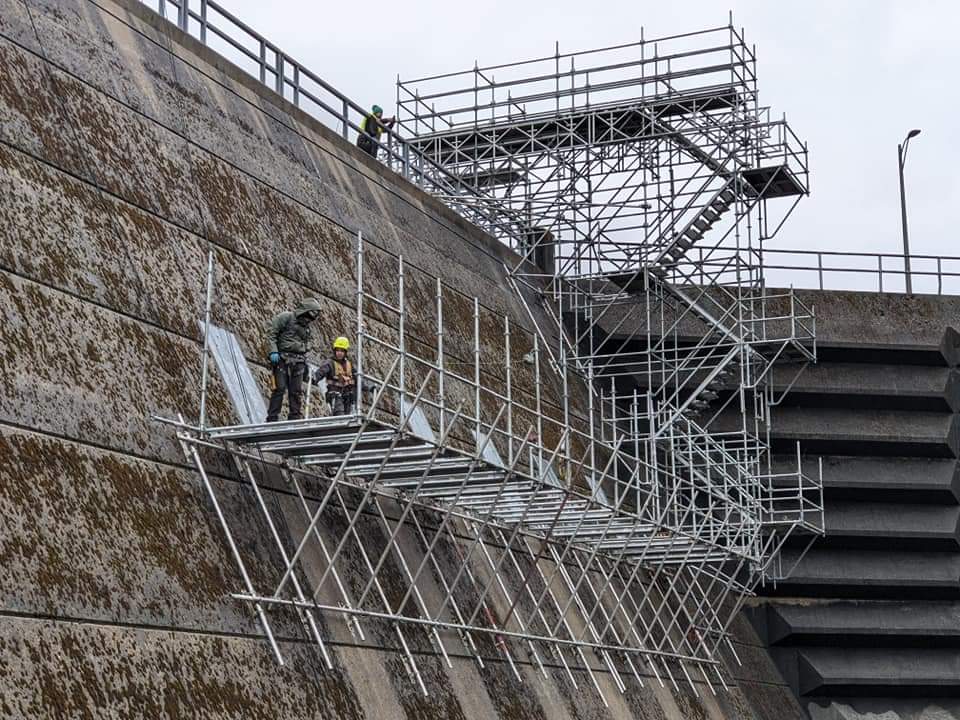
After constructing the scaffold base, the next step is to add the horizontal members that form the platforms of the scaffold. These horizontal members play a crucial role in providing stability and creating safe workspaces for workers and materials. Let’s take a closer look at the key components involved:
Cross Braces
Cross braces are essential for maintaining the stability of the scaffold. These diagonal members connect the vertical supports, forming a triangular structure that enhances rigidity. By securely attaching cross braces, you ensure a solid foundation for the scaffold and minimize the risk of wobbling or collapse.
Ledgers
Ledgers run parallel to the wall of the structure and provide lateral support for the scaffold boards or platforms. These horizontal beams add an extra layer of stability, distributing the load evenly across the scaffold. By choosing ledgers of the appropriate length and securely attaching them, you maintain the integrity of the scaffold and create a level working surface for the construction team.
Transoms
Transoms are horizontal beams that connect the ledgers to the next vertical support, further reinforcing the scaffold’s structure. These components ensure that the load is properly distributed and provide additional stability. By securely fastening the transoms, you create a robust framework that can withstand the demands of construction work.
Scaffold Boards or Platforms
Scaffold boards or planks serve as the actual work platforms for workers and materials. These sturdy wooden or aluminum boards are placed on top of the ledgers, creating a safe and spacious surface for construction activities. Ensuring that the scaffold boards are level, securely fastened, and free from defects is crucial for the safety and comfort of workers.
As you add these horizontal members to the scaffold, it’s essential to pay close attention to stability and levelness. A properly assembled scaffold will promote a safe and efficient working environment for the construction team, minimizing the risk of accidents and ensuring smooth progress on the project.
Now that we’ve covered the addition of horizontal members, the next section will focus on the importance of safety inspections and precautions to maintain a secure worksite.
Safety Inspections and Precautions
Before using the scaffold, it is crucial to conduct thorough safety inspections and take necessary precautions to ensure the well-being of workers and prevent accidents. Here are some key elements that should be considered:
Inspection Checklist
Inspect the following components of the scaffold:
- Base plates: Check for stability and secure attachment to the ground.
- Casters (if applicable): Ensure proper functioning and locking mechanisms.
- Frames: Examine for any damage or signs of instability.
- Braces: Verify that all braces are properly installed and tightened.
- Guardrails: Confirm the presence and integrity of guardrails to prevent falls.
- Access ladder: Check for proper installation and stability of the ladder.
- Scaffold boards: Inspect for any defects, cracks, or instability.
Ensure the overall stability of the scaffold by checking the connections, joints, and fastenings. Any signs of damage or instability should be addressed before allowing workers to access the scaffold.
Fall Protection Measures
Implement the following fall protection measures:
- Guardrails: Install guardrails on all open sides and ends of the scaffold platforms to prevent falls.
- Safety equipment: Provide workers with personal protective equipment (PPE) such as harnesses, lanyards, and safety nets, as required.
These measures are essential to protect workers from falls, one of the most common causes of injuries in scaffold-related accidents.
Dismantling Procedures
When the project is completed, proper dismantling procedures should be followed:
- Start dismantling from the top and work downwards.
- Remove all tools, equipment, and debris from the scaffold before dismantling.
- Ensure that workers are clear of the scaffold during dismantling.
- Store dismantled components in a safe and organized manner to prevent damage and ensure future use.
Rental and Maintenance Considerations
When it comes to scaffold construction, renting from a professional company offers numerous benefits. Scaffold rental services not only provide the necessary equipment but also include professional installation, ensuring that the scaffold is set up correctly and meets safety standards. These services also extend to offering safety training for workers, inspections to ensure ongoing safety, and maintenance and dismantling services.
Scaffold rental eliminates the need for you to purchase and store scaffolding equipment, making it a cost-effective solution for construction projects. By renting scaffolding, you can avoid the upfront costs associated with buying new equipment and the hassle of maintaining and storing it when not in use.
One of the key advantages of scaffold rental is the inclusion of professional installation. When you rent from a reputable company, their experienced team will handle the setup process, ensuring that the scaffold is properly assembled and secured. This eliminates the risk of improper construction and minimizes safety hazards on the job site.
In addition to installation, rental companies often offer safety training programs for workers. These training sessions provide valuable knowledge on how to safely use the scaffold, understand weight capacities, and follow proper procedures to minimize the risk of accidents and injuries. By ensuring that your workers are trained in scaffold safety, you can create a safer work environment and reduce liability.
Regular inspections and maintenance are vital for keeping the scaffold in optimal condition. Most rental companies provide inspection services to ensure that the scaffold remains safe and complies with safety regulations throughout the duration of your project. By conducting scheduled inspections, potential issues can be identified and addressed promptly, reducing the risk of accidents and maintaining a safe working environment.
Maintenance services offered by rental companies include routine cleaning, repairs, and replacements when necessary. Proper maintenance extends the lifespan of the scaffold and ensures its ongoing reliability and safety. By entrusting maintenance to professionals, you can be confident that the scaffold is receiving the necessary care to perform optimally.
When your project is completed, rental companies also handle the dismantling process, saving you time and effort. They will disassemble the scaffold, removing all components from the job site safely and efficiently.
Overall, renting scaffolding from a professional company provides a convenient and comprehensive solution for your construction needs. From professional installation to safety training, inspections, maintenance, and dismantling services, rental companies offer a range of support services to ensure the longevity and reliability of your scaffolding system.
Conclusion
Frame scaffolding plays a crucial role in the construction industry, providing a versatile and safe platform for workers to perform their tasks at elevated heights. By understanding the different types of frame scaffolding systems, the components involved, and considering rental and maintenance considerations, construction projects can be carried out efficiently and safely.
With the ability to choose from various types of frame scaffolding, such as frame and brace scaffolding, suspended scaffolding, and ring and cup system scaffolding, construction professionals can select the most suitable option for their specific project requirements. Each type offers unique advantages in terms of functionality and safety, ensuring that workers have the necessary support and stability while working at heights.
Implementing proper construction techniques, following safety precautions, and performing regular maintenance are essential factors in maximizing the efficiency and productivity of frame scaffolding. Adhering to safety regulations, conducting thorough safety inspections, and providing adequate training for workers are crucial steps in ensuring a safe working environment. By incorporating these practices, construction professionals can minimize the risk of accidents and injuries, creating a secure and efficient workspace.
In conclusion, frame scaffolding is a valuable asset in the construction industry. Its versatility, safety features, and ability to support workers at varied heights make it an indispensable tool for construction projects of all sizes. By understanding the different types, components, and considerations associated with frame scaffolding, construction professionals can make informed decisions that result in successful and efficient construction endeavors.
Frequently Asked Questions
What is frame scaffolding?
Frame scaffolding is a crucial component in the construction industry, providing a secure platform for workers at elevated heights.
What are the different types of frame scaffolding systems?
The different types of frame scaffolding systems include frame and brace scaffolding, suspended scaffolding, and ring and cup system scaffolding.
What are the components of frame scaffolding?
The components of frame scaffolding include modular frames, guard rail systems, entry gates, and optional stair units.
Can frame scaffolding be rented?
Yes, frame scaffolding can be rented from professional companies that provide installation, safety training, inspections, maintenance, and dismantling services.
What are the advantages of frame and brace scaffolding?
Frame and brace scaffolding is versatile, easy to use, and economical, making it suitable for both large-scale construction projects and smaller renovations.
What is suspended scaffolding used for?
Suspended scaffolding is commonly used for tasks that require vertical access to exterior building surfaces, such as window cleaning, maintenance, and painting.
What is ring and cup system scaffolding used for?
Ring and cup system scaffolding is specifically designed for complex projects in industrial, marine, and offshore environments, offering modular parts and customizable configurations.
What factors should be considered when choosing scaffolding?
Factors such as the nature of work, number of users, height of work, ground support conditions, duration of use, and required safety regulations should be considered when choosing scaffolding.
What are the basic steps in scaffold construction?
The basic steps in scaffold construction include gathering necessary materials, planning the scaffold height and shape, assembling the base, connecting horizontal beams and diagonal braces, and attaching safety equipment.
How do you build a sturdy scaffold base?
To build a sturdy scaffold base, you need to lay out the base plates, connect the vertical pipes with pipe joints, level the vertical pipes, tighten the bolts, measure and cut the horizontal pipes, and attach cross or T joints to secure them.
What are the horizontal members of a scaffold and how are they added?
The horizontal members of a scaffold include cross braces, ledgers, transoms, and scaffold boards or planks. They are added by attaching cross braces diagonally, running ledgers parallel to the structure’s wall, connecting transoms to the ledgers, and placing scaffold boards or planks for work platforms.
What safety inspections and precautions should be taken with scaffolding?
Safety inspections and precautions for scaffolding include checking base plates, casters, frames, braces, guardrails, access ladders, scaffold boards, overall stability, and ensuring proper fall protection measures are in place.
What considerations should be made for scaffold rental and maintenance?
Considerations for scaffold rental and maintenance include professional installation, safety training, regular inspections, scheduled maintenance, and following proper dismantling procedures.


